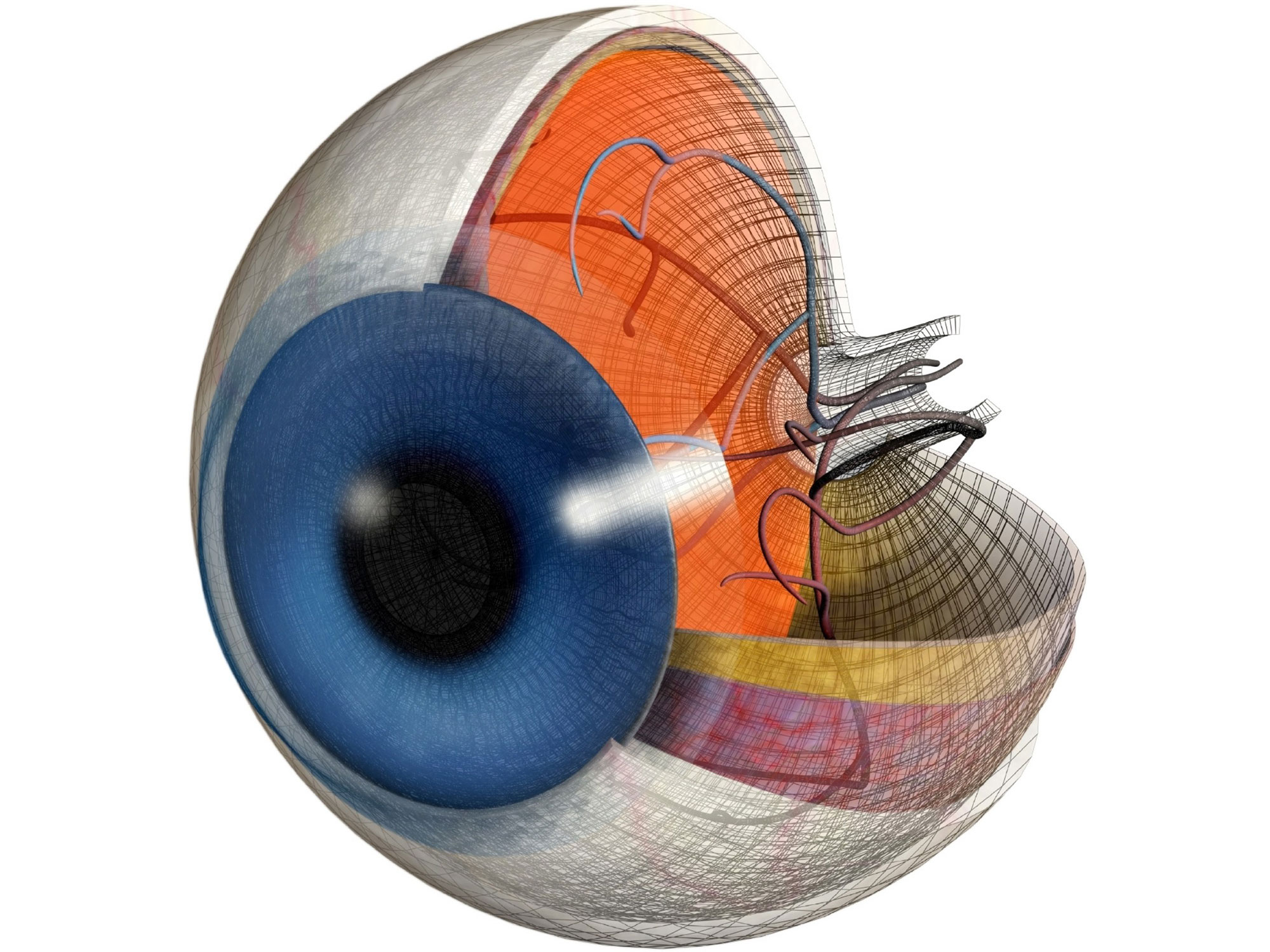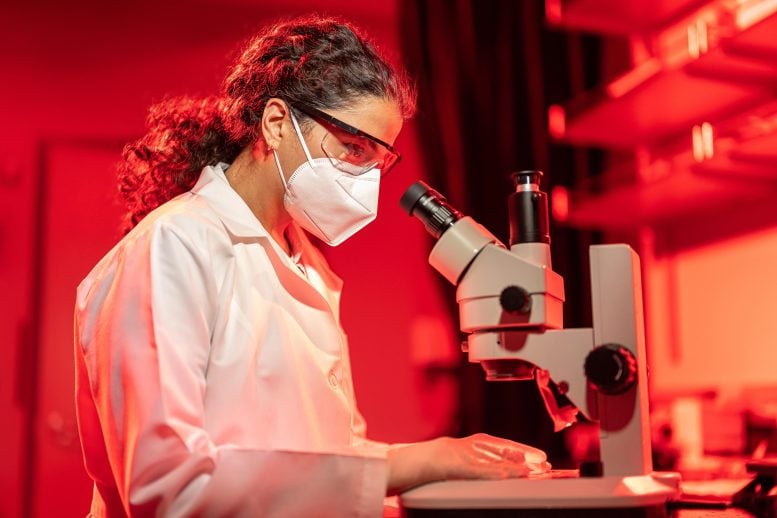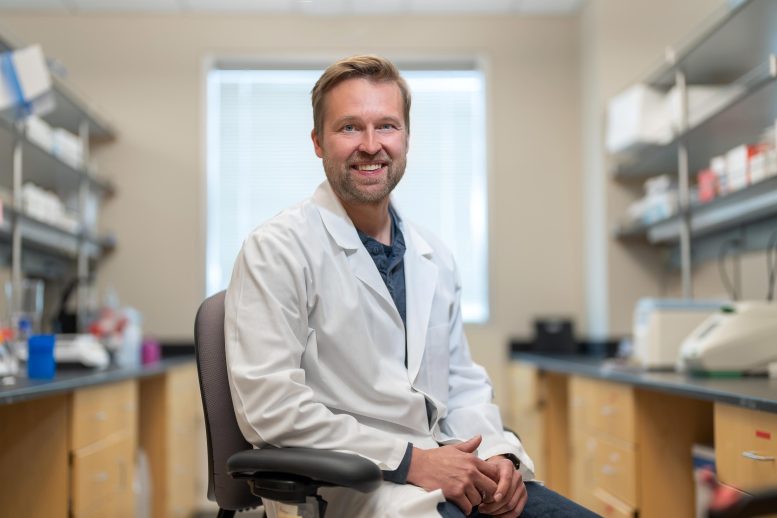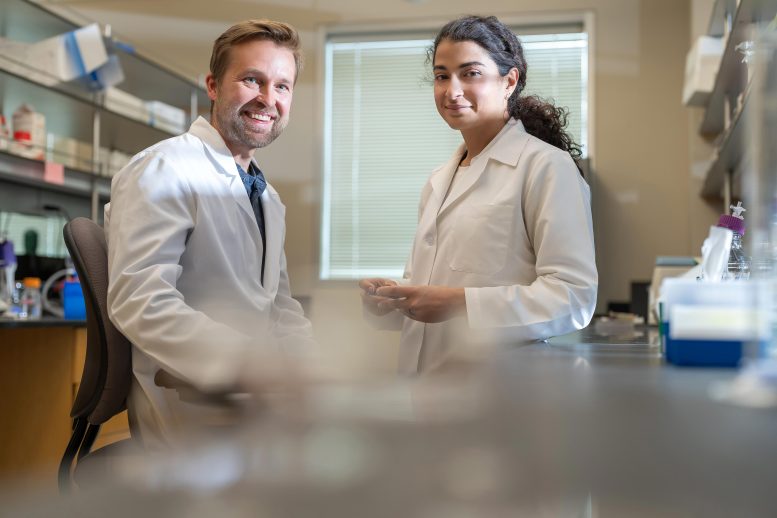
Imaginative and prescient Scientists Revive Mild-Sensing Cells in Organ Donor Eyes
As a part of a collection of discoveries that stand to remodel mind and imaginative and prescient analysis, scientists have revived light-sensing neuron cells in organ donor eyes and restored communication between them.
Billions of neurons within the central nervous system transmit sensory info as electrical alerts; within the eye, specialised neurons often known as photoreceptors sense gentle.
Publishing immediately (Could 11, 2022) within the journal Nature, a group of researchers from the John A. Moran Eye Heart on the College of Utah and Scripps Analysis collaborators describe how they used the retina as a mannequin of the central nervous system to analyze how neurons die—and new strategies to revive them.
“We had been capable of get up photoreceptor cells within the human macula, which is the a part of the retina answerable for our central imaginative and prescient and our capability to see tremendous element and shade,” explains Moran Eye Heart scientist Fatima Abbas, PhD, lead writer of the revealed examine. “In eyes obtained as much as 5 hours after an organ donor’s loss of life, these cells responded to brilliant gentle, coloured lights, and even very dim flashes of sunshine.”
Frans Vinberg, PhD, and Fatima Abbas, PhD, of the John A. Moran Eye Heart on the College of Utah talk about their newest examine, revealed in Nature. Abbas and Vinberg revived light-sensing neuron cells in organ donor eyes and restored communication between them as a part of a collection of discoveries that stand to remodel mind and imaginative and prescient analysis. Credit score: John A. Moran Eye Heart on the College of Utah
Whereas preliminary experiments revived the photoreceptors, the cells appeared to have misplaced their capability to speak with different cells within the retina. The researchers recognized oxygen deprivation because the essential issue resulting in this lack of communication.
To beat the problem, Scripps Analysis Affiliate Professor Anne Hanneken, MD, procured organ donor eyes in below 20 minutes from the time of loss of life, whereas Moran Eye Heart scientist Frans Vinberg, PhD, designed a particular transportation unit to revive oxygenation and different vitamins to the organ donor eyes.

Fatima Abbas, PhD, is a postdoctoral fellow within the lab of Frans Vinberg, PhD, on the John A. Moran Eye Heart on the College of Utah and lead writer of the examine. Abbas performed experiments at nighttime as she uncovered donor eye tissue to completely different sorts of sunshine and recorded photoreceptor responses. Credit score: John A. Moran Eye Heart on the College of Utah
Vinberg additionally constructed a tool to stimulate the retina and measure the electrical exercise of its cells. With this strategy, the group was capable of restore a particular electrical sign seen in residing eyes, the “b wave.” It's the first b wave recording made out of the central retina of postmortem human eyes.
“We had been capable of make the retinal cells discuss to one another, the way in which they do within the residing eye to mediate human imaginative and prescient,” says Vinberg. “Previous research have restored very restricted electrical exercise in organ donor eyes, however this has by no means been achieved within the macula, and by no means to the extent we've got now demonstrated.”
The method demonstrated by the group could possibly be used to check different neuronal tissues within the central nervous system. It's a transformative technical advance that may assist researchers develop a greater understanding of neurodegenerative illnesses, together with blinding retinal illnesses akin to age-related macular degeneration.

Frans Vinberg, PhD, in his lab on the John A. Moran Eye Heart on the College of Utah. Vinberg has revealed a examine in Nature detailing how he revived light-sensing neuron cells in organ donor eyes and restored communication between them as a part of a collection of discoveries that stand to remodel mind and imaginative and prescient analysis. Credit score: John A. Moran Eye Heart on the College of Utah
The Nature examine, “Revival of sunshine signaling within the postmortem mouse and human retina,” has now offered information from over 40 human donor eyes—together with the primary description of a mechanism that's anticipated to rate-limit the pace of human central imaginative and prescient.
Vinberg factors out this strategy can scale back analysis prices in comparison with non-human primate analysis and dependence on animal fashions that produce outcomes that don't at all times apply to people. Whereas mice are generally utilized in imaginative and prescient analysis, they don't have a macula. Researchers may also take a look at potential new therapies on functioning human eye cells, rushing drug improvement.
“The scientific group can now examine human imaginative and prescient in ways in which simply aren’t attainable with laboratory animals,” says Vinberg. “We hope this can inspire organ donor societies, organ donors, and eye banks by serving to them perceive the thrilling new prospects such a analysis provides.”

Frans Vinberg, PhD, and Fatima Abbas, PhD, of the John A. Moran Eye Heart on the College of Utah within the Vinberg lab. The pair have revealed a examine in Nature exhibiting how they had been capable of revive light-sensing neuron cells in organ donor eyes and restore communication between them as a part of a collection of discoveries that stand to remodel mind and imaginative and prescient analysis. Credit score: John A. Moran Eye Heart on the College of Utah
Hanneken, who can also be a long-time retinal surgeon affiliated with Scripps Memorial Hospital La Jolla, mentioned the flexibility to supply viable patches of human retinal tissue might result in new therapies for blinding illnesses.
“Till now, it hasn’t been attainable to get the cells in all the completely different layers of the central retina to speak with one another the way in which they usually do in a residing retina,” Hanneken mentioned. “Going ahead, we’ll be capable to use this strategy to develop therapies to enhance imaginative and prescient and lightweight signaling in eyes with macular illnesses, akin to age-related macular degeneration.”
The Nature examine joins a physique of science elevating questions in regards to the irreversible nature of loss of life, partly outlined by the irreversible lack of neuronal exercise. Yale College researchers made headlines after they revived the disembodied brains of pigs 4 hours after loss of life, however they didn't restore world neuronal exercise.
Authors of the examine are: Fatima Abbas, Silke Becker, Bryan W. Jones, and Frans Vinberg of the College of Utah, Ludovic S. Mure and Satchidananda Panda of The Salk Institute for Organic Research, and Anne Hanneken of Scripps Analysis.
Donor eyes for the examine had been obtained in collaboration with the Utah Lions Eye Financial institution, the San Diego Eye Financial institution, and organ donor society LifeSharing. The analysis group is deeply grateful to those that donated their eyes and their authorized representatives who accommodated the surgical group’s effort to obtain the eyes.
Reference: “Revival of sunshine signaling within the postmortem mouse and human retina” 11 Could 2022, Nature.
DOI: 10.1038/s41586-022-04709-x
The analysis was supported by the Nationwide Institutes of Well being and an Unrestricted Grant from Analysis to Stop Blindness, New York, NY, to the Division of Ophthalmology & Visible Sciences, College of Utah.
0 Response to "Life After Death for the Human Eye: Reviving Light-Sensing Cells"
Posting Komentar